The following article does not contain medical advice. It presents long term training strategies for increasing general resistance in healthy people. The author would like to thank Kristann Heinz, MD and Paul White, MD for their valuable input.
Take care of your family and your other responsibilities. Then train.
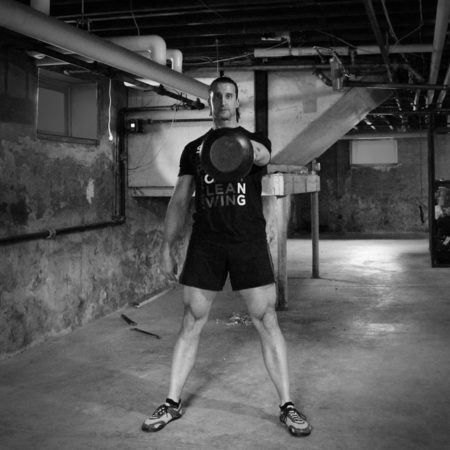
The following strategies should improve your odds of staying healthy or, at least, fighting off a virus more effectively:
- Increase the reserve powers of your main functional systems;
- Improve your non-specific resilience through cross adaptation;
- Do not compromise your immune system by excessive and irrational training.
One at a time.
1. Increase the Reserve Powers of Your Main Functional Systems
I have written about Academician Nikolay Amosov’s “quantity of health”[1] thesis more than once, but not enough.
According to Amosov, most people are only “statically healthy”—until the environment disrupts their fragile status quo. Although they may be feeling fine, even a mild infection is potentially dangerous to them. Not the infection itself, but the complications from the strain it puts on the supply systems.
The scientist coined the term “the quantity of health”, or the sum of the reserve powers of the main functional systems. It is measured with the “health reserve coefficient”, the ratio of the system’s maximal output to the everyday demands on it.
For example, a person’s body needs one gallon of blood per minute at rest. If pushed to the limit, his/her heart can pump out 1.3 gallons per minute—the maximal cardiac output. Thus, his/her heart’s reserve coefficient is 1.3:

Should the demands on the heart increase by more than 30% as a result of some severe stress, the dry medical verdict will read: “Died from complications.” In case of COVID-19, doctors tell us it is the respiratory system that is likely to be the weak link that could spell curtains to a patient.
Thus, it is axiomatic that a person who desires to be anti-fragile must train his or her cardiovascular and respiratory systems.
“Cardio” can be trained traditionally with running, cycling, swimming, etc. Do your homework and use a reputable training method, such as Dr. Phil Maffetone’s.
If you prefer to get your “cardio” while lifting—or you are stuck indoors because of the quarantine—avoid “grinds”[2] and go explosive.
Dr. Fred Hatfield explained how: “…for…weight training to be beneficial in improving max VO2 uptake values, it must be non-restrictive, rhythmic with relaxation pauses between each rep, of sufficient intensity to maintain a pulse rate above 60-70% of the trainee’s maximum heart rate, and greater than 30 minutes duration. Also, each repetition should be an all-out effort as well—maximum contracture against submaximal resistance, so multiple reps can be performed.”[3]
A “weight” does not have to be a barbell or a kettlebell; it can be your own weight.
To use the burpee as an example, you will
need to make two radical changes from the way it is done in “metcon” gyms to
make it aerobic.
First, pop up like a spring. The common “Chariots of Fire” style of performance will not cut it.
Second, rest between reps long enough to sustain an aerobic effort for over 30 minutes. For instance, do a rep, slowly walk to one end of the room, walk back, do another rep… Or do a rep using a timer once every “N” seconds. The exercise will be aerobic if you can pass the talk test before every rep, until the very end, so adjust your rest periods accordingly. Even though you should not go anywhere near a full 30-minute stretch the first time out, the pace you set should allow you to.
As for your respiratory function, it will improve along with your “cardio”, although additional modalities, such as swimming and special breathing exercises, can be used to take it to the next level.
Once the pandemic passes, carry on your respiratory training if you want to stack your odds in favor of a long life. Peter Wayne[4], a Harvard Medical School associate professor, explains why:
One indication that good breathing affects health is the strong association between breathing function and longer life span. Two studies illustrate this association nicely. The first is the landmark Framingham Heart Study, in which a cohort of 5,209 men and women, aged 30 to 62, was followed for more than 20 years.[5] At the beginning of the study, all participants underwent pulmonary testing and had an evaluation of a key index of healthy breathing called “forced vital capacity” (FVC), which is simply the amount of air you can forcibly exhale from the lungs after taking the deepest breath possible. Over the course of the study, FVC was a very strong predictor of cardiovascular-related death and disease. This relationship was robust, even when factors such as initial age, smoking status, and prior pulmonary and heart disease were taken into account.
A second, more recent, study at the University at Buffalo followed 1,195 men and women for 29 years and also reported a strong relationship between lung function and mortality using a measure called FEV1—a measure of the maximal amount of air you can forcefully exhale in one second.[6] In this study, lung function was a significant predictor of all-cause mortality, not just heart disease, as in the Framingham study. Again, this relationship was strong even after factors such as smoking, blood pressure, and age were considered. What’s more, the risk of death was increased for participants who had only moderately impaired lung function, not only those with severe impairments.
In summary, long before you become diagnosed with a serious illness, the health of your breath may predict your life span.
A Russian joke expresses the same sentiment more concisely.
After Grandma blew out the 100 candles on her birthday cake all at once, the grandchildren realized that it would be a long time before they get to fight over her condo.
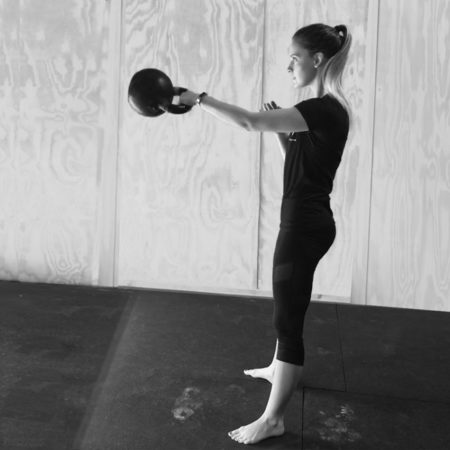
2. Improve Your Non-specific Resilience Through Cross-Adaptation
Soviet scientists concluded decades ago: “It has been determined from animal experiments and observation of human subjects that muscular activity increases the organism’s non-specific resistance to many unfavorable stressors people are subjected to in modern conditions, e.g., hypoxia, some poisons, radioactive materials, infections, overheating, overcooling, etc. A significant decrease in illnesses has been observed in people training for a sport or practicing physical culture.”[7]
Intelligent exposure to a host of other stressors such as hypoxia and cold also increases one’s general resistance. These are manifestations of the phenomenon of cross adaptation discovered by Prof. Felix Meerson.[8]
One aspect of increased general resistance is fortifying cell membranes against all sorts of damaging factors, including free radicals.[9]
Beefing up one’s defenses with cold exposure (the ancient Russian practice of “tempering”) or intermittent hypoxia (e.g., breath holds) takes a lot of knowledge—undisciplined practice or following pop methods ungrounded in science are dangerous—and medical clearance by doctors educated in these practices.
Exercise is accessible to all.
Specifically, aerobic exercise. Dynamic aerobic training improves the organism’s resistance to damaging factors; strength training does not.[10] Even worse, muscle building without endurance work makes one less resilient. Pronounced myofibrillar hypertrophy without a corresponding mitochondrial development lowers the mitochondrial density and decreases one’s resistance to stressor damage.[11] (Of course, strength makes one resilient in other ways, against life’s other challenges.)
3. Do Not Compromise Your Immune System by Excessive and Irrational Training
Scientists have stressed that “rational” physical training is needed to increase one’s non-specific resistance[12] and the immune system is stimulated by “moderate” exercise.[13] Overdoing it is likely to have the opposite effect.
Specialist athletes and people who perform hard physical labor pay an especially high price for their adaptation.[14] High level athletic training often leads to a development of stress, a decrease of the immune function, and an increase in diseases.[15] A very high level of adaptation to one factor may have a negative effect on other factors, apparently due to a concentration of the adaptive resources in one direction. A common example is a depressed immune system in athletes in top competitive shape; synthesis of immune proteins is inhibited.[16]
“Athletes’ adaptive reactions often do not correspond to those of health,” comments prominent medical researcher Dr. Lyubov Garkavi.[17] This is especially true in the competition period.[18]
Glycolysis is associated with stress[19] and glycolytic training is very stressful to the neuroendocrine and the immune systems.[20] “Unlike continuous training, high-intensity interval exercise…results in a sharp elevation in the various stress-response hormones… Chronic elevations of these hormones can have a suppressive effect on…[the] immune function.”[21]
All of this means: avoid overtraining and minimize glycolytic training like HIIT and “metcons”.
Summary
In summary, here is a simple recipe to make yourself more resilient to viruses and more:
- Do moderate dynamic aerobic exercise;
- Avoid overtraining with any type of exercise.
And lift. While physical strength is not going to increase your resistance to the virus, it might help you defend your toilet paper roll at the supermarket.
Power and health to you!
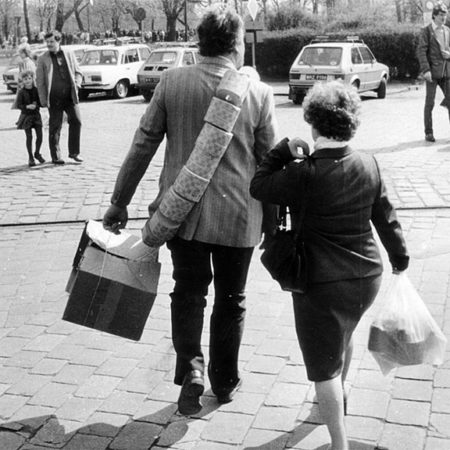
[1] Amosov, 1986.
[2] Hatfield, 1989, based on Stone et al., 1983.
[3] “Since isometric contractions hinder the local blood flow and dynamic exercise facilitates the circulation, it follows that a greater oxygen uptake can be obtained during dynamic exercise… Static exercise produces relatively high heart rate and arterial blood pressure… Dynamic exercise[’s]…superiority over static exercise as an endurance exercise can be explained partly on the basis of the muscle pump and the alternating emptying and filling of [myoglobin] oxygen stores during alternating muscle contraction and relaxation.” (Åstrand et al., 2003)
[4] Wayne, 2013.
[5] Kannel et al., 1983.
[6] Schunemann et al., 2000.
[7] Zimkin, 1975.
[8] Meerson, 1981.
[9] The phenomenon of adaptive stabilization of structures (PhASS) (Meerson et al., 1991).
[10] Meerson & Pshennikova, 1988.
[11] Meerson & Pshennikova, 1988.
[12] Zimkin, 1975.
[13] Yakovlev et al., 1990.
[14] Volkov, 2000.
[15] Dembo, 1980; Marischouk, 1983; Shoubin & Levin, 1985.
[16] Yakovlev, 1986.
[17] Garkavi et al., 1998.
[18] Konovalov et al., 1991.
[19] Garkavi et al., 1998.
[20] Sashenkov et al., 1995.
[21] MacDougall & Sale, 2014.

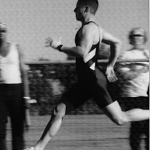
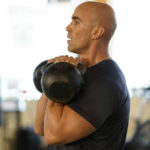
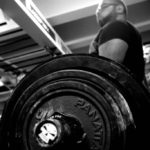

Have you seen the recent research papers on “Sprint Interval Training”? A couple research scientists in the UK looked at the use of short (20 sec) maximal-effort sprints, with rest intervals of several minutes between each sprint, and examined how many sprints resulted in the best cardiovascular improvement (measured via VO2max). Amazingly, the answer was 2 or at most 3 sprints. And the improvements were similar to programs consisting of much longer periods of aerobic exercise. Curious about your reaction. https://journals.lww.com/acsm-msse/Fulltext/2017/06000/Effect_of_Number_of_Sprints_in_an_SIT_Session_on.11.aspx
Maybe a silly question that doesn’t need to be answered, but given how big a part of my life S&S and SF have become… This is just a conceptual question – maybe too philosophical and not so practical. I’ve read somewhere on the forums that some feel that the swings in S&S count for a conceptual “80 percent” of the programme and the getups for just “20 percent”. It’s just that I don’t feel this way doing the programme. They feel roughly equal in terms of time and effort, concentration etc… Am I missing something conceptually here?
leave gas in tank but drive the car
Hi Pavel
Great article, Dr Phil Maffetone program has helped me immensely over the years.
What strength protocol do you recommend at the current time?
5 rep sets but leaving at least 2-3 ‘in the tank’?
Power to you
Great article!
I have a question, Pavel. For years, I’ve been a member of the “overtraining” sect. Once I came across your revised S&S, I realized the mistake. Now, I just want to be healthy and even follow a solid routine indefinitely (even when “progress” stop).
However, I still want to train daily and the S&S schedule now prescribes training 3-4 days a week. Would S&S for 4 days and Q&D swings/pushups for 2 days be a good option? Or is there a better option?
Hi. I am not Mr. Tsatsouline, but I wanted to show you this article: https://www.strongfirst.com/strength-aerobics/ . It is written by Mr. Tsatsouline and it is recommended that the program in it to be alternated with S&S after one reaches Simple standard. Maybe it will do you good.
Hi,
Had been doing S&S to timed simple and timeless solid and decided to do a cycle or 2 of ROP. I’ve been following the swing and snatch programme with the variable programming by the dice and doing heavier swings, cleans, snatches and carries on the variety days.
I wondered how this fits into advice on aerobic conditioning and if I should supplement in some way. I’d be grateful for advice
Malcat, one glycolytic session a week (as in the ROP) is fine for most healthy athletes in normal times. Right now I would recommend skipping the 100% days and alternating light (50-60%) and medium (70-80%) days.
I think this has been answered above, but can one do heavy swings as, substitute for burpees, in the same format , OR as Q and the D.
Chris, swings, yes—but not too heavy, as the movement must be powerful. You would be doing Rif’s “dead swings” in the A+A format.
Q&D does not lend itself to burpees.
Comrade,
It’s simply fascinating to watch your interviews as well as reading your articles and how you summarize all these studies about physical performance and the development of general health from different researchers throughout decades of investigations.
I’ve just took a VO2 max test (right before going in quarantine) with flying colors and I’m ready to train again.
My “sissy” days are over.
Power to you, Pavel!
Take care.
Thank you, Ivan, power to you!
Thank you for this fantastic article! Some valuable insights to ponder upon 🙂
Thank you, kiwipete !
Curious to better understand the Counting Talk Test concept and application described in the Instagram clip of the power burpees. Why does the less-fit person (lower resting CTT) have a shorter interval than a more fit person with >25 rCTT?
Sean, I have no experience with this particular technique of administering the talk test; perhaps we will ask Paul to write about it at some point.
interesting read as I sit here in quarantine trying to recover from Covid19.
Before falling sick I was doing S&S early AM and Martial Arts PM both 5 days a week. I do have sports asthma, which I manage extremely well – in fact I only worry about it when I get sick with a respiratory illness like this one. With S&S and my other training, I feel like I built up resilience to survive extreme situations.
On my road to recovery I’m using Amosov’s 1000 Recharge from Super Joints. It’s one of my staple routines that I use to recover from any illness or when I need a rest from other training. I emphasize connecting deep breathing to each and every movement. It hurts like hell, but I feel it helping me recover.
In addition, I had some complications (thanks to my asthma) requiring me to take Ventaline. When I do, I also use ‘Box Breathing’ exercise with it. I am only back up to 7 seconds, but again this is another one of those tools that is really helping me recover. I’m working my way back up to a 10 second box.
At the end of the day, I really need to thank you and everyone here. The information does help.
Thank you for your kind words, Chris! A rapid recovery to you.
Pavel,
Outstanding article!
“All of this means: avoid overtraining and minimize glycolytic training like HIIT and “metcons”.”
For general health and for the generally healthy (no pre-existing heart conditions) how often would you place a “metcon” workout into a rotation?
Thank you, George.
No more than 1 in 5—and do not exceed 90% MHR.
New to the site. However, I’ve been doing similar style for the past 8 months with “aerobic” cardio workouts like farmer carries, truck push, sled (forward & back), prowler etc… Recently, past two months picked running up 3 days a week for 30 minutes.
With this at-home stint we’re all in I’m looking at ways to continue my progress. I’ve lost 100 lbs (year).
I’ve been using some brick tongs and carrying brick (10) at a time with one arm 40 yards then switch arms and repeat for 30 minutes.
I haven’t been able to find any kettlebells “instock” (did order some from Strong First yesterday and didn’t realize they too we’re on backorder).. anyways, the videos and articles here are amazing.
Any insight on how to break into this “arena” would be much appreciated.
Best
Anthony, losing 100 pounds in one year through lifestyle changes is exceptional.
To get started with kettlebell training, I recomment my book Kettlebell Simple & Sinister plus the StrongFirst Kettlebell Fundamentals video course.
Good evening, sir!
Thanks for that nice article.
These days I’ve been basically doing swings and push-ups… Just feeling it.
And what I do and love, all day long, with one, two or three kilos, are 10-minute heavyhands sessions. My wife laughs a lot. No problem.
A tribute to the great and underrated Leonard Schwartz. Crazy people like him… He misses in these times.
Big hug from Brazil
Thank you, Eduardo.
Dr. Len Schwartz’s “Heavy Hands” method is an excellent way to train aerobically. I had the pleasure to speak to the late doctor several times.
I used to do a lot of “Heavy hands” walking and hiking swinging dumbbells. It felt good – like I was walking not just with my legs but with my arms as well.
Thank you, Pavel.
Your earlier article The Cost of Adaptation was a revelation for me and has guided my approach to training ever since I first read it.
This latest article will be equally helpful.
GPP for life!
Thank you, David.
Comrade,
The universe had been telling me to review the Russian SEAL method of blowing up a hot water bottle (Milo, September 2000), then this appears! Mysterious, I know. Seriously though, what are your thoughts on pursuing blowing up the water bottle as a fun training diversion all these years later? And thank you for the excellent content all these years later as well, I own a lot of printed Pavel material and I have followed a lot of your material online… a lot!
Tom
Thank you for your kind words, Tom!
Thank you Pavel. I feel less guilty for substituting long walks, jumping rope, and swings for PTTP deadlift this week. Keeping the bench but DL just didn’t feel what I needed right now. You confirm that some cardio is just what the doctor ordered right now for many of us. I will pay more attention to variety in exercise type after this experience and your article.
You could have also added the well-researched benefits of exercise, especially moderate cardio, on mental health.
guardian7, I would not skip your lifting. Plenty of good reasons to stay strong.
“You could have also added the well-researched benefits of exercise, especially moderate cardio, on mental health.”
Good points; just not my wheel house.
Pavel, what a great article! StrongFirst methods of practice, Second Wind breathing exercises, tempering – a true game changer. Thank you sir!
Thank you, Pavel!
Pavel, thank you for another great article.
My current schedule consists Program Minimum from S&S 2.0 performed 6 times a week (aiming in Timeless Simple), Push-ups (I follow this plan https://www.strongfirst.com/plans-for-building-powerful-pushups/ ), and Pistol Singles 5-10 a day as GTG. Unfortunately running or walking is not in option in my case due to the covid situation, thus I would like to ask what would I do instead of those activities?
Michal, most cardiovascular benefits from exercise come from a relatively small amount of training; see the government guidelines. S&S 2.0 should suffice.
If the term “anti-fragile” interests you, I recommend the book by Nassim Nicholas Taleb, Antifragile: Things That Gain From Disorder.
Mr. Freides,
As an instructor of the Advanced Buteyko Breathing method, do you think it would be helpful in improving non-specific resilience through cross-adaptation?
Using breathing exercises based on Buteyko’s teachings, I have successfully reversed my own chronic asthma, which I had suffered from my whole life.
David, I recommend you attend our Second Wind Seminar. To answer your question directly, yes, I think it would be helpful, but Second Wind will give you a broad perspective and add many things to your breathing toolbox.
Thank you. I find only two seminars on this site: a Second Wind Express and Built Strong seminar in Colorado scheduled for August and a Second Wind seminar in Italy scheduled for October. Are others currently scheduled?
In the meantime, I will recommend Buteyko as a means of fighting COVID-19.
Also, I second your Antifragile recommendation, along with Fooled by Randomness and The Black Swan, both by the same author. I have no doubt that Skin in the Game is also a winner.
David, as we are straying from the topic of comments on this article, please find me by using the Contact form and selecting Forum as the topic, and I will reply by email. Thank you very much.
Thank you sir for this article.
It is timely.
Right now, many wannabe trainers are flooding the internet with tough challenges “to achieve while in quarantine”. But we are in a time when we should not compromise our immune system.
I have been sharing “The cost of adaptations” a lot lately, and I will be sharing this article also.
Thank you, Jean-Francois.
Thank you Pavel! Great article. I wonder if doing Simple and Sinister would be as beneficial? I’m in the middle of the program.
Thank you, Lyssusus.
Yes.
Pavel,
could you outline a simple “S&S 2.0 + X” training strategy for this purpose?
Would Maffetone-running be a good “bang for your buck” addition to S&S 2.0?
If so: How would you combine S&S and running? How many runs/week should someone doing “S&S only” so far start with?
Can running and S&S be done on the same days or should the number of S&S sessions be reduced and training days be altered?
If running and S&S on the same days: Can S&S and running be combined in one session or should they be divided into seperate sessions?
So far I’ve had excellent results combining S&S and running. Since the start of January I’ve been exclusively doing just those two.
I run 3/4 days a week, and have done so for several years in a row now. For the past two years I’ve practiced the 80/20 rule, meaning 80% of my running is aerobic. I wear a HR monitor for both running and S&S. When I do intervals, I prefer sprints, with lots of walking to recover, but I use these sparingly.
Initially I was doing S&S, 3 days on/1 off, until I worked up to the 28kb bell. Now I’ve decreased my S&S frequency to 2 days on/1 off, to recover my grip. I try to run immediately after one of my S&S sessions, keeping my HR less than 140 bpm, for around 20-40 min.
My day off S&S, I go for a longer aerobic run, usually anywhere from 60-80 mins, always keeping my HR less than 140. This method allows me to get plenty of aerobic running in and I definitely feel my recovery has been enhanced.
Marc, you have a solid schedule.
Lt. Dan, Maffetone style running is a perfect complement to S&S 2.0.
Running 3/week is sufficient for building general resistance.
How may times a week do you do S&S and what time of the day?
I do S&S 6 times a week.
I try to get my training in just before my first meal at around 11.45 (I always skip breakfast). If work does not permit that, then I train before eating dinner.
Lt. Dan, I suggest that you run first thing in the AM 3/week.
So, just to make sure, I hope that Strength Aerobics (https://www.strongfirst.com/strength-aerobics/) qualify as “moderate dynamic aerobic exercise”?
Fred, borderline. Swings or snatches done A+A o S&S 2.0 style are better for the goals stated in the article.
What makes this article stand out from other sources is the author’s insistence to provide citations.
It would have been much easier to rattle off an article quickly from his vast experience yet he has taken time to provide 21 sources for references.
Awesome work in these unnerving times.
Peter, thank you for your kind words! I had to fill the space somehow, otherwise the article would have been two sentences long. ;]
* Do moderate dynamic aerobic exercise;
* Avoid overtraining with any type of exercise.
Hi Pavel,
Will working upto one top set in the big three be a better option than sets across? This followed by kettlebell swings s&s style?
Thanks for sharing your knowledge sir!
Darius, are you referring to the three powerlifts?
Yes Pavel. Basically the power lifts or their variations.
Thanks
Darius, working up to one top set has been used by some of the strongest US powerlifters. Its downside for less experienced lifters is very little technique practice.
So my habit of going on long (at least 75 minute walks) as often as possible during the week has some science behind it! It’s funny because it just “felt right” doing this kind of training, and I have always been known as particularly strong and resilient among my training partners and to my coaches in judo and kendo – not saying my martial arts skills keep pace with that though!
Kozushi, simple walking is undoubtedly healthy for reasons outside of my domain but to get cardiovascular and respiratory benefits out of it you need to elevate your heart rate while at it. Walk fast.
Yes, thank you for pointing that out!
I’ve been assuming that S&S is more than adequate cardio – I hope I am correct in this assumption.
Kozushi, you are correct.
AWESOME! 🙂
Pavel thank you for everything. Your methods changed my life.
Thank you, Adam!
Thank you, Pavel! I recently went back to your earlier articles on GPP and training balance to help re-inform my training. Those truly are classics that changed the way I understood fitness and the trade-offs of training for performance.. Now more than ever my goal is overall health. In addition to what you outline above, I have taken your advice from What is Work Capacity and have upped my meditation time and am making sure to get plenty of sleep. Stay strong everyone!
Thank you, Tim!
Excelent piece. I loved the article named The Cost of Adaptation, I read it every week just to remind myself of the proper ways of training.
Right now I train in a Park Bench manner (label by Mr. Dan John). 3 days a week (40-50 minutes session). 5 movement patterns (a squat, a push, a pull, a hinge and a loaded carry). For each movement pattern I do 3 sets of 8 to 12 reps.
Where in the week can I do explosive burpees in the manner laid out in this article?
Many thanks,
Marius
Thank you, Marius!
Do these aerobic burpees on non-lifting days.
Thank you, sir. I have discovered this week that explosive burpees are not really my thing. But I can do 2H swings safely and effectively. How can I use them as dynamic aerobic exercise?
Pavel,
What are your thoughts regarding “two limb” vs “four limb” types of cardiovascular/respiratory training, the difference in beneficial effects?
I’ve read some interesting articles (albeit 4-5 years ago) from Marty Gallagher. He mentioned that based on that fact that VO2 levels of cross country skiers consistently score highest, the use of four limbs provides greater adaptation (as compared to most traditional forms of cardio like walk, bike etc that limit use to the lower body and thus only two limbs.) He was a huge proponent of the AirDyne in this respect, and I would imagine a rowing machine would come a close second. Guidelines such as Dr. Maffetone’s would still be followed with these modalities.
Can you comment on that idea? Thanks!
Wes, we are getting in the weeds away from general endurance training for health now.
If you are training for an endurance sport, even aerobic training must eventually become specific. E.g., skiing will not help a runner.
For health, there are additional vascular and mitochondrial benefits from “four limb cardio”—but for some populations, e.g. people with some heart conditions, it can be too demanding. Hence consult your doc.
Yes, I was more interested in benefits for health specifically. I appreciate the thoughts, thank you!
Thank you for your kind words and wishes, SFSparky.
We have noted your request for a webinar.
Hey Pavel
Great article. Loved the cost of adaptation article a few years back. I’m currently following QD 3 days a week with swing and push up. Could you incorporate something like the burpee practice alongside QD it or would it be better to develop cardio through walking etc. Thanks
Thank you, Conor.
If you are doing Q&D, burpees would be redundant.
Something like hiking would be best.
Many thanks, Pavel. By sharing and explaining the tools to sustain and improve health, you are empowering people to be proactive. That may be an initial and crucial step in becoming anti-fragile.
I’m guessing that the practices detailed in your Second Wind seminar play directly into this. I would enthusiastically support a live web version of the seminar if that would be practical and feasible.
May you, your loved ones, and the StrongFirst community at large stay safe, healthy, and strong.
Pavel,
Thank you for the article. It’s been exciting to watch StrongFirst grow and expand it’s influence in recent years—very well done! I have purchased most of the online content SF has put out, and it is Top Notch.
I second SFSparky—a webinar would be great!
Thanks again.
SF training programmes and the fabulous advice garnered here on this site have changed my life in so many wonderful ways! S&S along with PTTP inspired deadlifts and ROP inspired kettlebell presses have become fundamental parts of my life routine.
Thank you for your kind words, Kozushi!
I honestly cannot thank you enough for what your programmes and this site have done for my health and my progress in my martial arts. Strong First has added a whole other basic component to my daily routine and has given me good health and I hope along with it long life also – priceless things!
Thank you, Taylor!
Merci beaucoup, Kozushi! De la puissance et de la santé!
Je vous en prie, Monsieur! C’est moi qui devrais vous remercier!
I have had the same thought for a Second Wind online seminar and would happily sign up for something along these lines. The full course would be great; but maybe what we most need now is version that teaches key techniques for GPP and increasing the quantity of health for the respiratory system.
Thank you, Tim, we will take note.
Pavel,
Thank you for sharing such knowledge and insight for free.
What does Dr Fred Hatfield mean by “non-restrictive” weight training? Does it have something to do with blood circulation and avoiding ‘muscle pump’?
Can submaximal barbell snatch, C&Js be used for dynamic aerobic training?
Harshvardhan Ranga, “non-restrictive” weight training means there is no prolonged tension to impede the circulation—no powerlifts and other “grinds.”
Barbell snatches are perfect; C&J are less so (a longer time under tension). Various snatch and clean pulls are excellent.